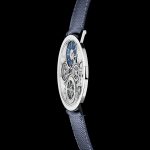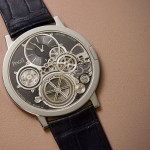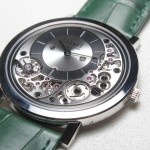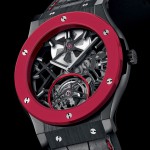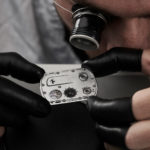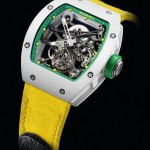In-Depth: Piaget Debuts Thinnest Tourbillon Watch Ever
The Altiplano Ultimate Concept Tourbillon is just 2 mm high.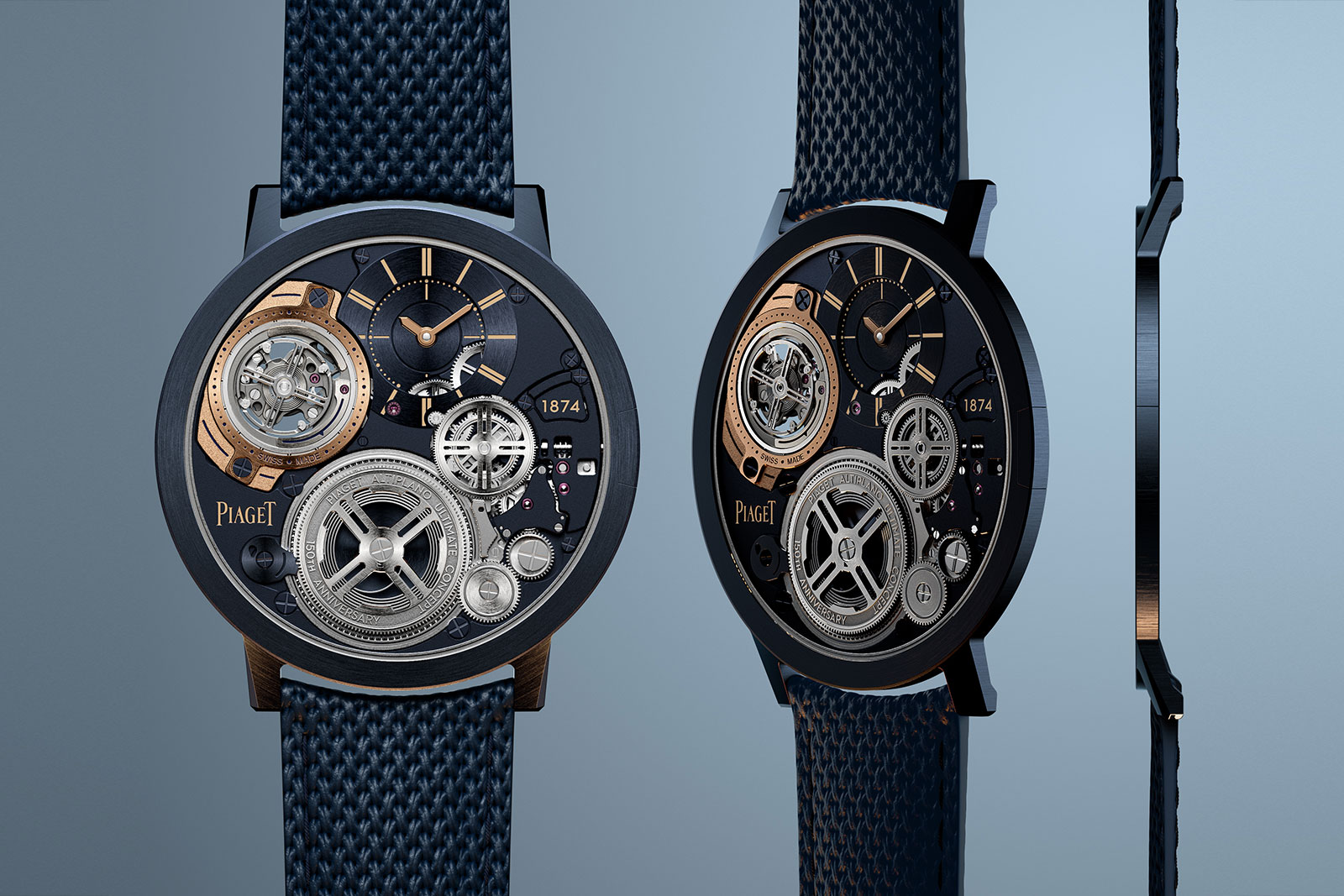
Piaget does the unexpected to mark its 150th anniversary. Instead of a special edition of an existing timepiece, Piaget has profoundly reworked the Altiplano Ultimate Concept (AUC) – endowing it with a flying tourbillon.
The thinnest tourbillon ever by some margin, the Piaget Altiplano Ultimate Concept Tourbillon 150th Anniversary measures 41.5 mm in diameter and stands just 2 mm high, crystal included. In other words, Piaget installed a tourbillon in the AUC while maintaining the same overall height.
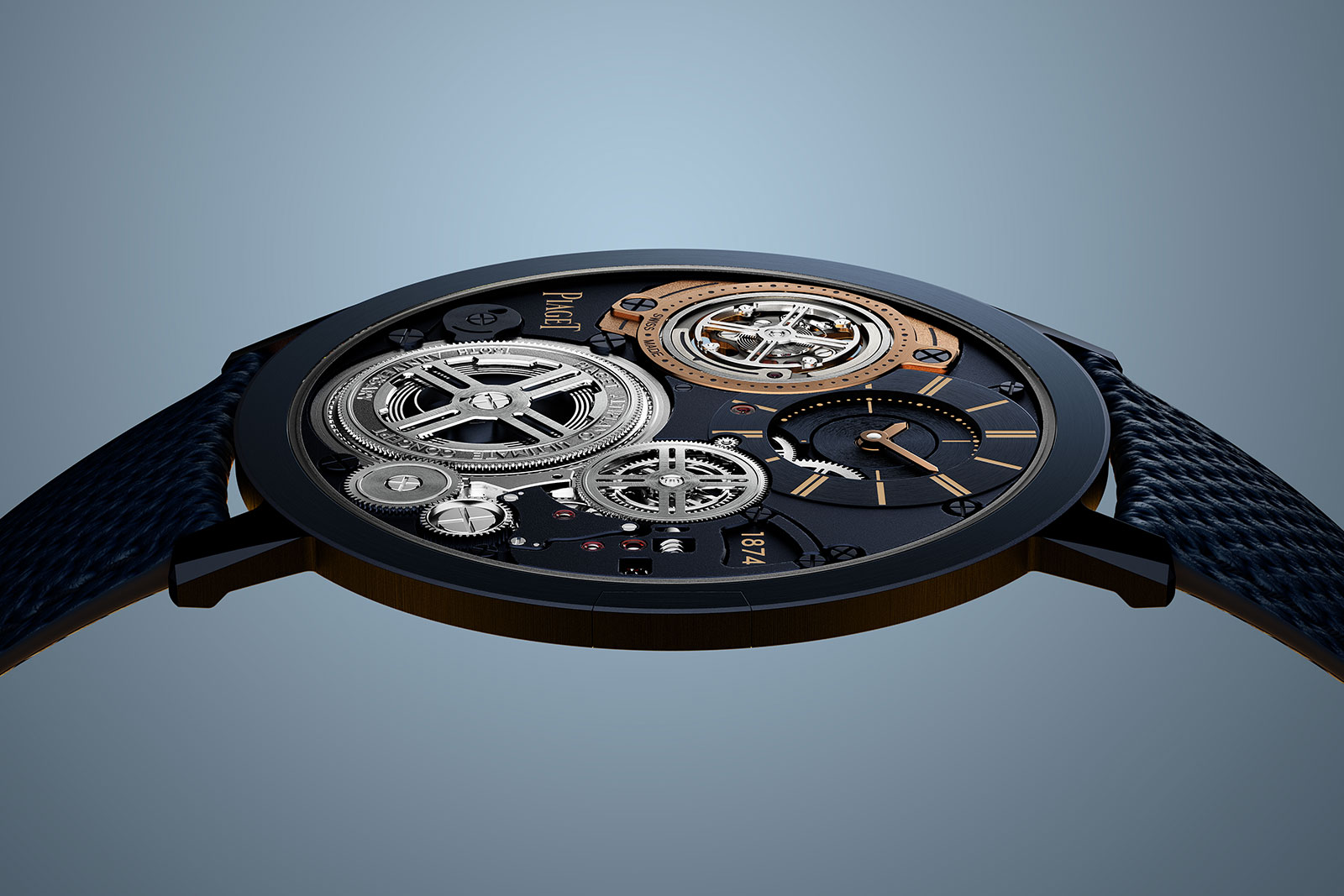
Initial thoughts
The original AUC of 2018 was an impressive example of micro engineering. The innovative movement construction resulted in a case thickness of just 2 mm, while still managing to look like a conventional watch, as opposed to the panel-like appearance of the even thinner Richard Mille RM UP-01.
Now Piaget has built upon the concept by adding a tourbillon to the slim construction. A tourbillon is not a practical addition, since chronometry was never the main point of the AUC. Instead, this is an exercise in pushing the limits of micro engineering. Piaget’s engineer surmounted the challenge and the result is nothing short of amazing.
It’s crucial to note that adding a tourbillon to the AUC is not merely adding a tourbillon. Practically the entire calibre was reworked – according to Piaget one 90% of the parts are new – right down to reducing the number of spokes in the wheels to minimise energy consumption.
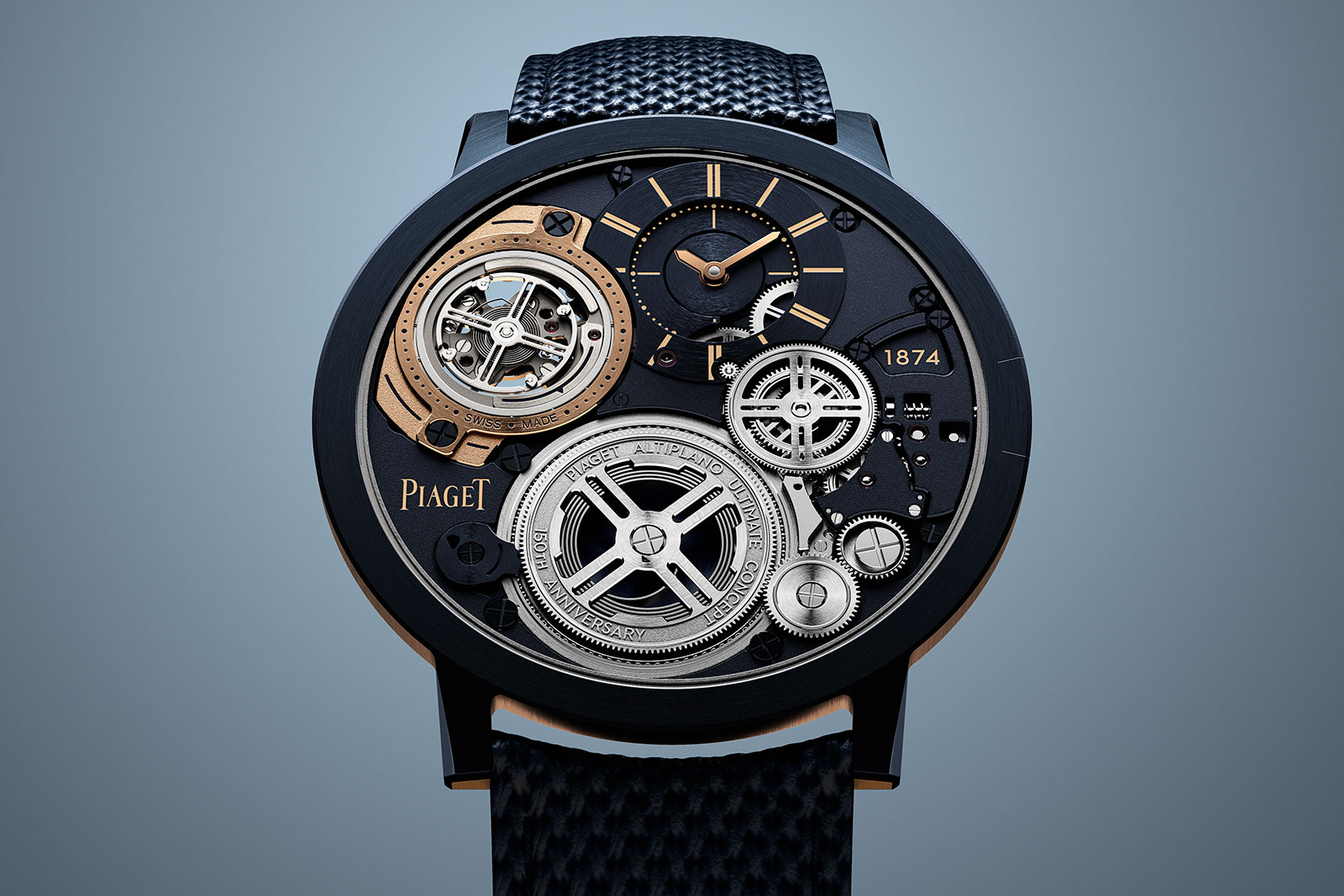
Beyond its mechanics, the AUC Tourbillon also boasts a subtle but important upgrade with slightly angled lugs. This improves its aesthetics and ergonomics, setting it apart from the linearly flat original that felt one dimensional and too flat on the wrist.
All these small details make the AUC Tourbillon a very different timepiece from the AUC of 2018, although there’s an undeniable visual similarity between the two. As it was with the original, the AUC Tourbillon impresses in its similarity to an ordinary watch, more so in fact, given its more ergonomic case. Arguably, the only sacrifice the AUC Tourbillon had to make is ease of winding and setting, because the crown is expectedly small at just 2 mm high like the case. Because it’s so minuscule, a tool is required to easily wind and set the watch.
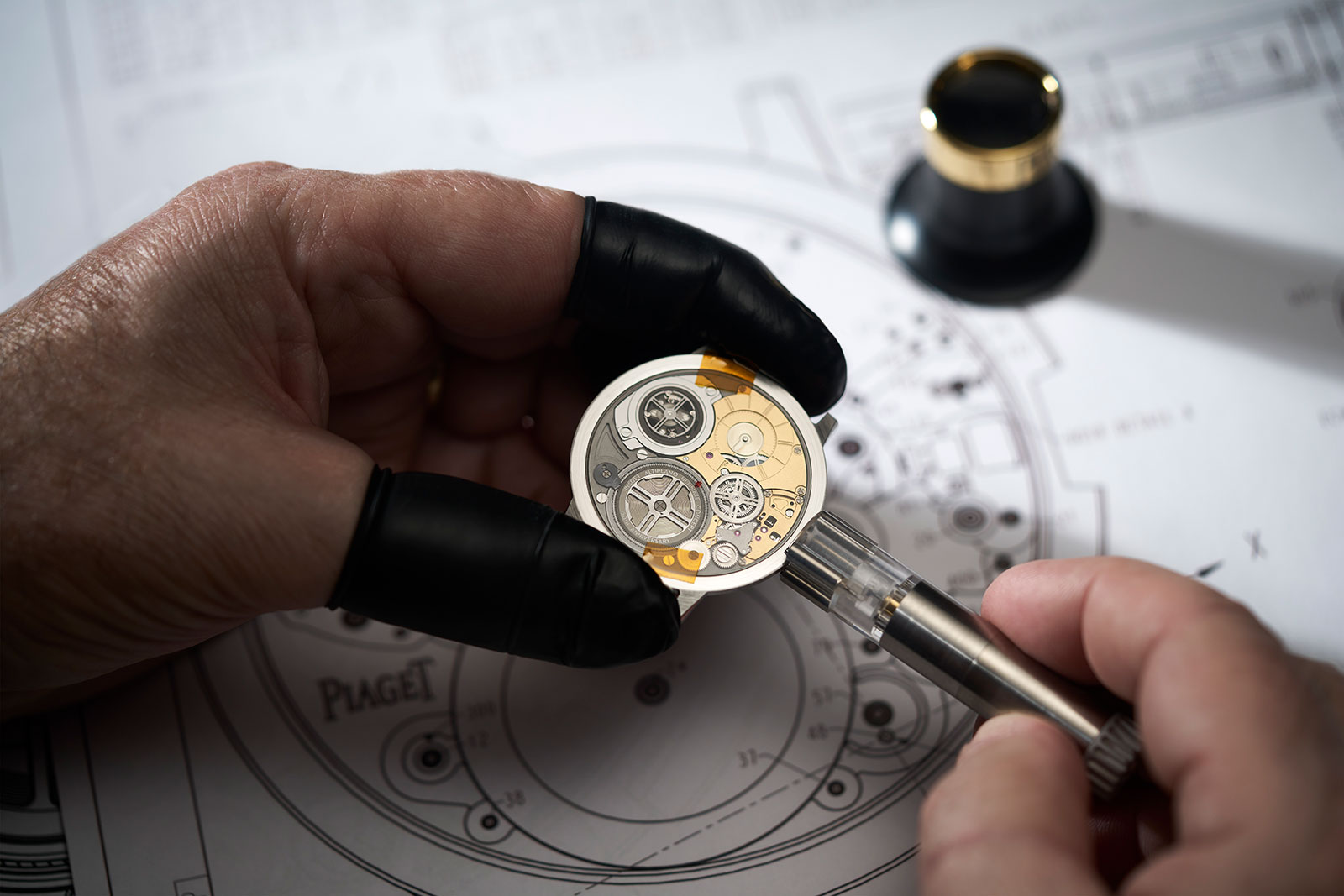
Technical feats starting with the tourbillon
Compared to the original AUC, the Tourbillon is different in all respects save thinness – it retains the same 2 mm height. Although the two might seem very similar, the mechanics have been completely reworked for the cal. 970P-UC of the AUC Tourbillon.
Even though the AUC Tourbillon is conventional in terms of function – it has two hands and a tourbillon for the seconds – it is constructed in an entirely unconventional manner. As with the original AUC, this movement incorporates numerous innovations large and small – but mostly very small – in order to achieve its record-setting height.
One of the key features shared between the AUC Tourbillon and its 2018 predecessor is the M64BC cobalt alloy case. An unusually hard and rigid alloy, M64BC is ideal since it such a thin case requires above average stiffness. A gold case, for instance, would bend if strapped on too tightly on the wrist.
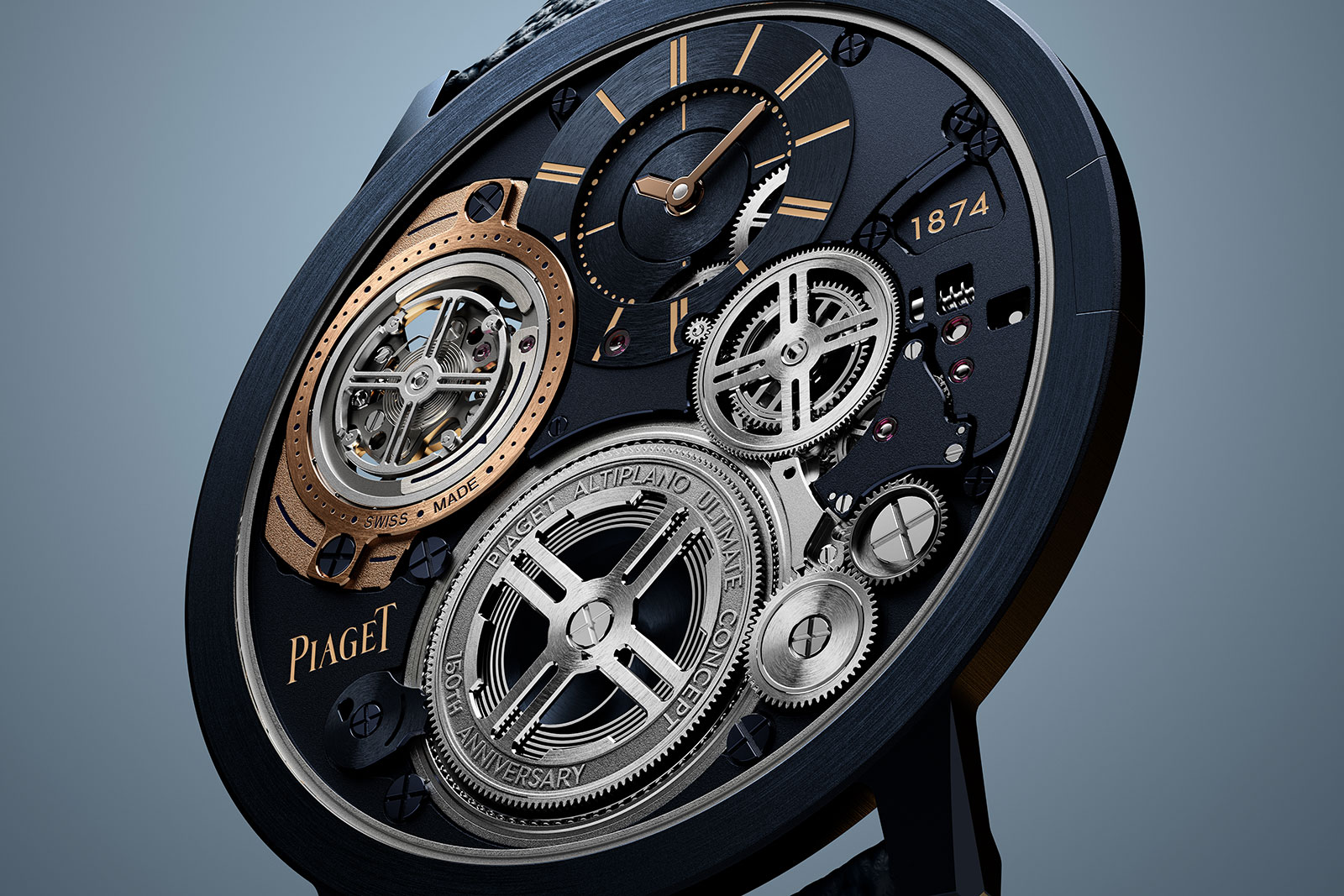
This is all the more important since the case back is also the main plate for the movement – all of the moving parts sit on the inside of the case back. A trick employed by numerous ultra-thin movements since the 1970s, this construction is also found in the AUC of 2018.
But here the centrepiece of the movement is the tourbillon, which is unsurprisingly, entirely unconventional in its approach, save for its one-minute rotation.
The purest and most efficient execution of the tourbillon is the classic architecture conceived by A.-L. Breguet, where the revolving cage is affixed to a fourth pinion and powered by the third wheel. Here the number of gears in the going train is virtually the same as in a classic movement, save for requiring a stationary fourth wheel.
Breguet’s classic construction is fairly tall, making it unfit for ultra-thin movements. Tourbillons driven by a toothed cage, on the other hand, are thinner. That solution, however, raises its own issues – namely requiring more elaborate gearing to accelerate the large diameter carriage to the one-turn-per-minute rate.
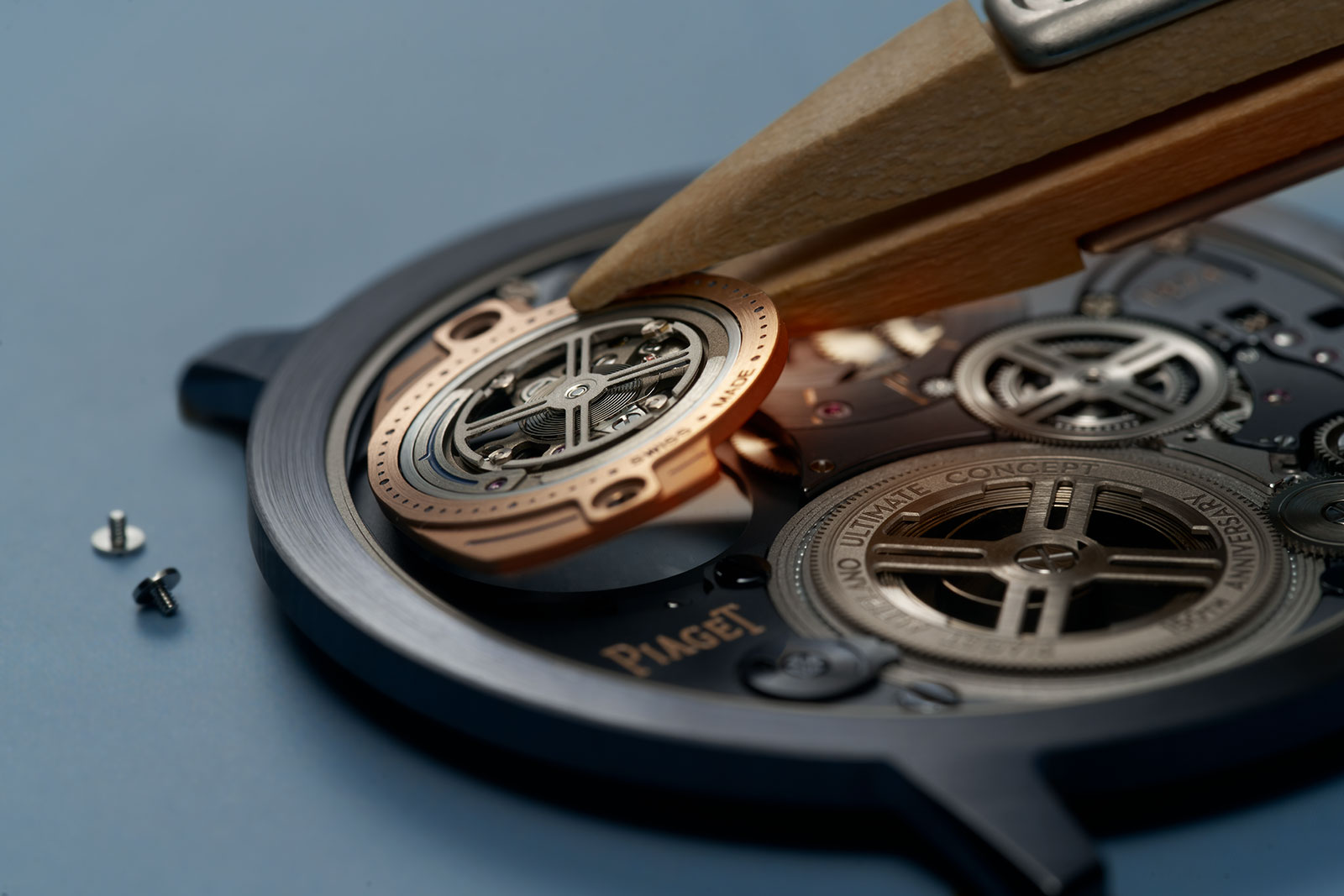
The AUC Tourbillon has a rim-driven cage in order to keep the thickness to a minimum, which results in a more complex going train. This explains a good portion of Piaget’s claim that over 90% of the components in the original AUC had to be redesigned in order to accommodate a tourbillon.
The specific construction of the tourbillon creates the impression that the cage is floating, seemingly unconnected to the rest of the movement. The driving gears are hidden by the surrounding plates, with only the escape wheel being barely visible.
Balls and bearings
Another secret to the AUC Tourbillon’s thinness is the use of ball bearings. While a conventional, manual-wind tourbillon movement has about 20 jewels, the cal. 970P-UC features only 13 jewels plus six ball bearings.
Ball bearings are commonly used in automatic watches as pivot points for the rotor. They work with close to negligible friction and are sturdy enough to support heavy components. Ball bearings were first used as pivots in the going train by Jean Lassale in its cal. 1200 of 1976 – a record setting ultra thin movement that suffered from major reliability issues – in order to drastically bring down the movement thickness.
Ball bearings were employed in the Jean Lassale movement because a wheel fixed in a ball bearing doesn’t require the two pivot points at the top and bottom at conventional jewelled bearings demand. With just one pivot point for wheels, a movement can be slimmed down.
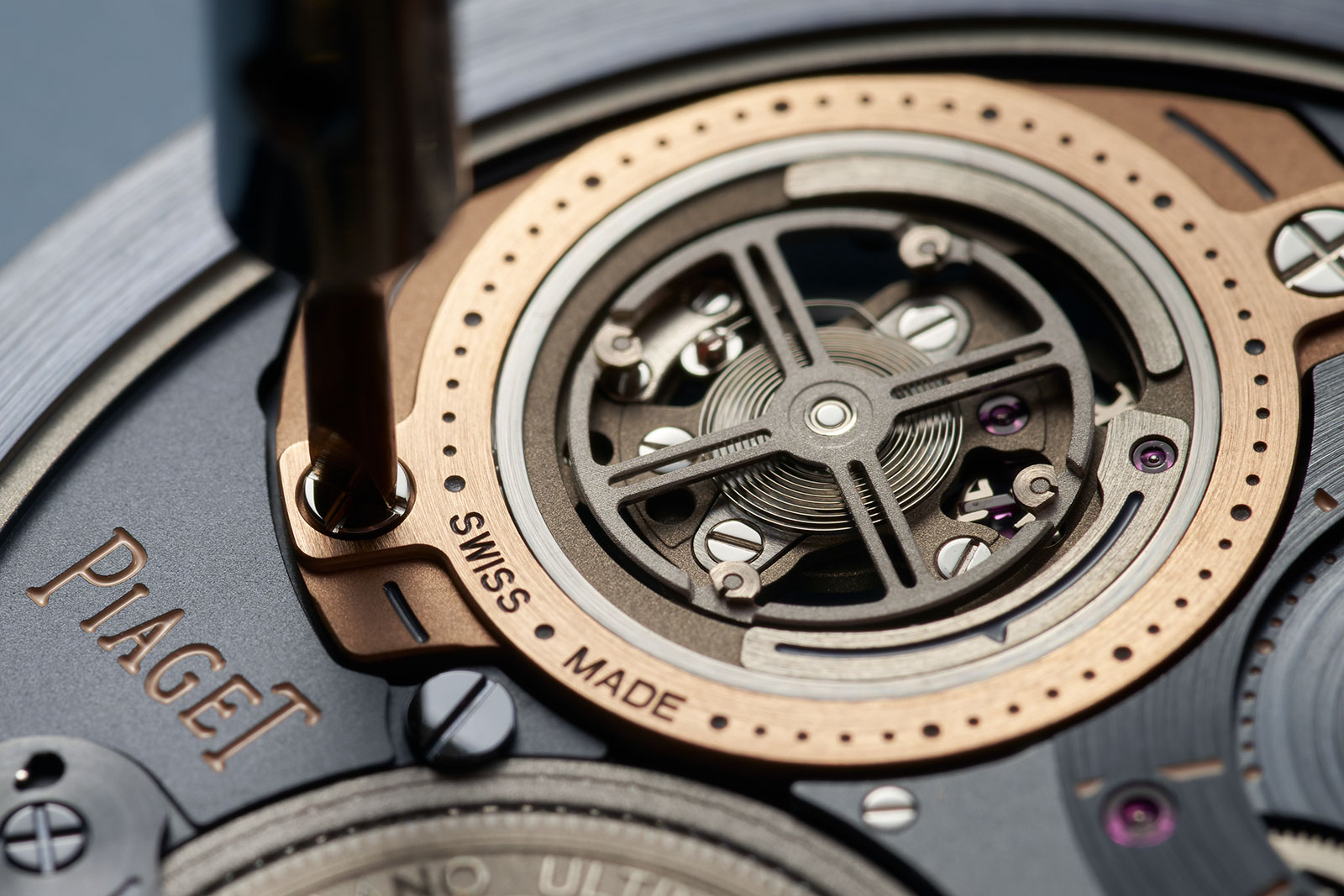
But Piaget’s engineers went further the conventional ball bearing pivots that some some flying tourbillon constructions rely on for increased sturdiness. The AUC Tourbillon employs a large diameter bearing of ceramic that forms the tourbillon cage, enclosing the balance and escapement.
This novel, inventive construction is thin but stable, with the ceramic ball bearing mounting keeping any play to a minimum while generating minimal friction. Rotating at the traditional one revolution per minute, the tourbillon cage doubles up as a discrete seconds indicator.
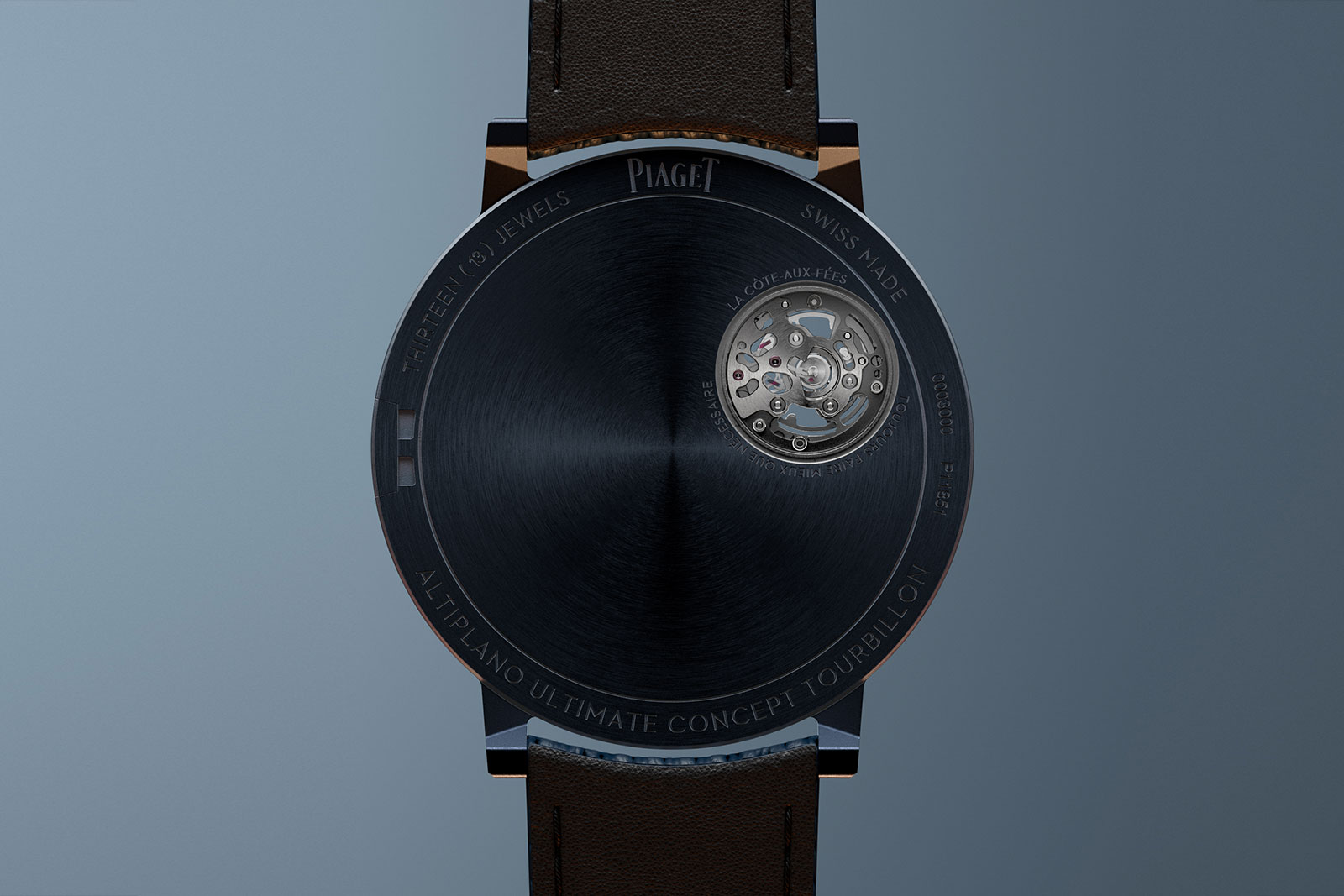
The small window on the case back allows a view of the tourbillon
Minute innovations
The unorthodox construction is also evident in the balance assembly. Inside the ball bearing cage, the free-sprung balance sits slightly off-centre, a by-product of the drastically slim architecture. Being free-sprung, the rate is fine-tuned via the four regulating weights on the rim of the balance.
The balance is “flying” as it is anchored only on one side in a small ball bearing. Moreover, the balance features an inverted construction, with the hairspring pinned on its underside between the balance wheel and ball bearing.
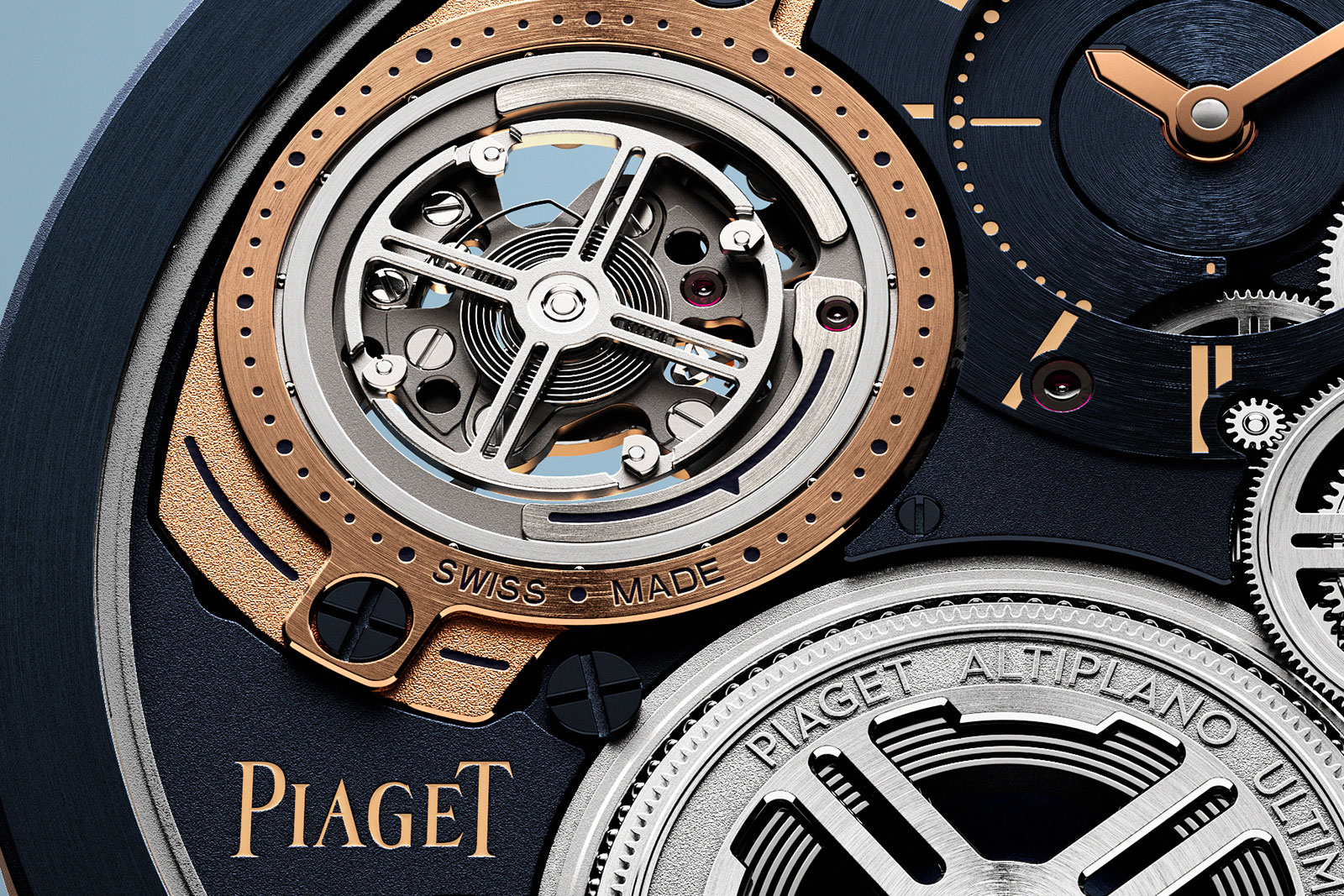
The balance roller presents a curious choice; the impulse pin is not made from traditional hard-wearing ruby, but instead it’s milled from the same lightweight alloy as the balance staff, it was in the AUC of 2018. This is visible through a porthole on the case back – the sapphire disc is just 0.16 mm in thickness – that reveals the underside of the tourbillon.
Another notable innovation, which is also found in the AUC of 2018, is the worm screw in the keyless works. This is used for winding the mainspring. Winding can be done by hand, but due to the inconvenient crown that is tiny and flat, a purpose-built, pen-like tool can be called into action for easier winding.
Like the balance, the barrel is “flying” – it sits with a wide ball bearing with the coils of the mainspring visible within the bearing. Notably, the barrel cover has been open-worked to form four spokes, a motif that is echoed in all the gears of the movement. This is for reasons of energy consumption and power reserve.
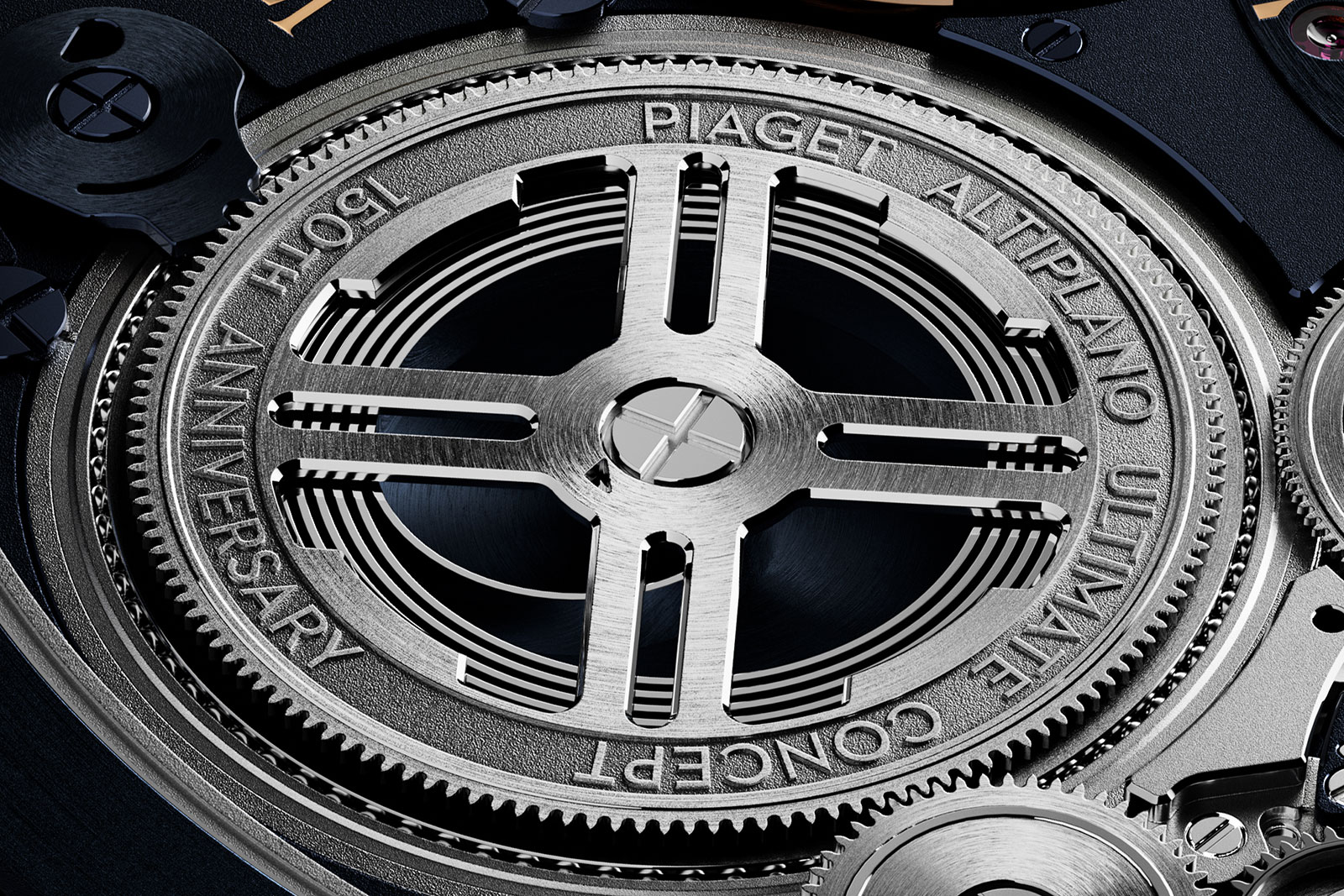
According to Piaget, the addition of a tourbillon requires 30% more energy. Given the extremely limited space inside the movement, the options for delivering more energy were limited. One solution was a slight thickening of the mainspring, so it can store more energy.
Another solution was to reduce the energy consumption of the movement, explaining the four spokes on the larger wheels, as compared to the uniformly six-spoked wheels in the AUC of 2018. Reducing the number of spokes also reduces the weight of the biggest wheels, consequently trimming the energy required to run the movement.
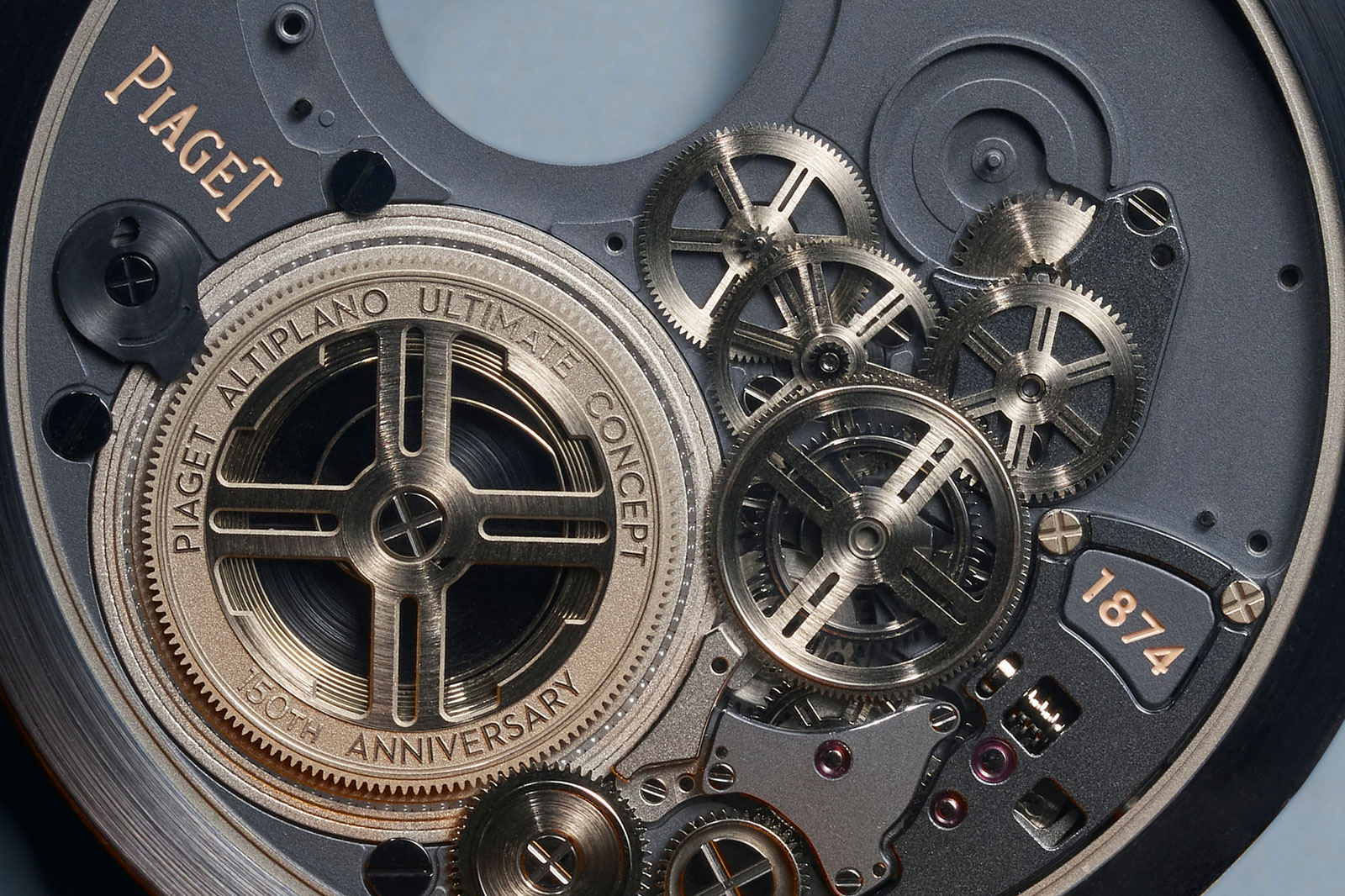
Although the AUC Tourbillon is more of a showcase for inventive engineering that pushes the boundaries of size, attention was still paid to the finishing of the movement. Given the size of the components, the room to decorate is minimal, but the calibre still boasts some hand finishing – as it should given the price.
Some components are chamfered by hand, a process particularly difficult to execute well, as any excessive filing will cause structural damage due to the fineness of the parts. The four spokes of the gears, for instance, are polished with a diamond-tipped tool for a mirror finish – great care is required to preserve the flatness and geometry of the gears during this process.
Key facts and price
Piaget Altiplano Ultimate Concept Tourbillon 150th Anniversary
Ref. G0A4951
Diameter: 41.5 mm
Height: 2 mm
Material: M64BC cobalt alloy
Crystal: Sapphire
Water resistance: 30 m
Movement: Cal. 970P-UC
Functions: Hours, minutes, small seconds on the tourbillon cage
Winding: Manual
Frequency: 28,800 vibrations per hour (4 Hz)
Power reserve: 40 hours
Strap: Calf leather
Limited edition: No, but only made to order
Availability: At Piaget boutiques and retailers
Price: Approximately CHF600,000
For more, visit Piaget.com
Back to top.

